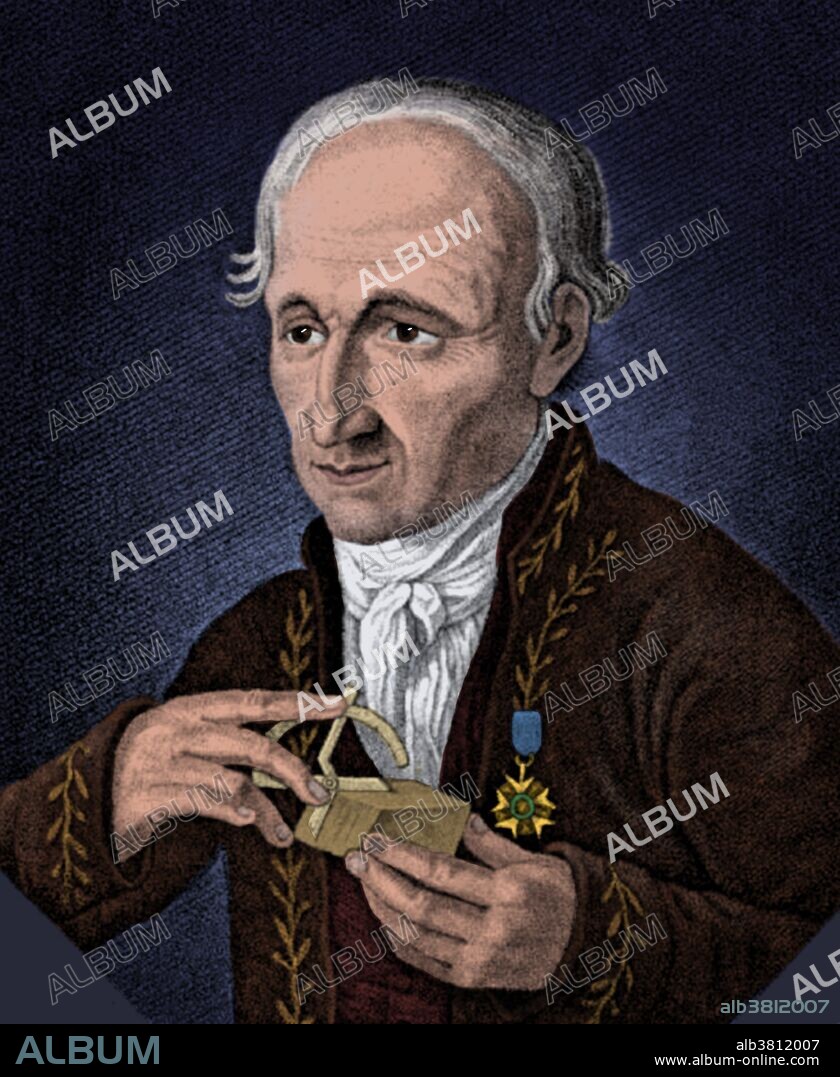alb3812007
Rene Just Hauy, French Mineralogist

|
Ajouter à une autre Lightbox |
|
Ajouter à une autre Lightbox |



Avez-vous déjà un compte? S'identifier
Vous n'avez pas de compte ? S'inscrire
Acheter cette image

Titre:
Rene Just Hauy, French Mineralogist
Légende:
Voir la traduction automatique
Rene Just Hauy (February 28, 1743 - June 3, 1822) was a French mineralogist and ordained Roman Catholic Priest. His interest in crystallography resulted from the accidental breaking of a piece of calcite. Upon examination he discovered that they cleaved along straight planes that met at constant angles. He broke more pieces of calcite and found that, regardless of the original shape, the broken fragments were consistently rhombohedral which led to his theory of crystal structure. Hauy's law of whole numbers (law of rational intercepts), one of the primary laws of crystallography and also one of the first quantitative laws of the atomic-molecular structure of solids. He is also known for the observations he made in pyroelectricity. When the Revolution broke out, he was thrown into prison. In 1802, under Napoleon, he became professor of mineralogy at the National Museum of Natural History. After 1814 he was deprived of his appointments by the Restoration government. His final days were spent in poverty and he died in 1822 at the age of 79. His name is one of the 72 names inscribed on the Eiffel Tower. This image has been colorized.
Crédit:
Album / Science Source
Autorisations:
Modèle: Non - Propriété: Non
Questions sur les droits?
Questions sur les droits?
Taille de l'image:
3450 x 4208 px | 41.5 MB
Taille d'impression:
29.2 x 35.6 cm | 11.5 x 14.0 in (300 dpi)
Mots clés:
18 18E 18EME XVIII XVIIIE XVIIIEME SIECLE • 18E SIECLE • 18EME S • ABBE, CLERGE • CATHOLIQUE (ADJECTIF) • CATHOLIQUE (PERSONNE) • CATHOLIQUE • CÉLÈBRE • CELEBRITE • CLERGE, ABBE • CURE • DIX-HUITIÈME SIÈCLE • EUROPÉEN • HOMME • ILLUSTRATION • MINERALOGISTE • PERSONNAGES • PERSONNALITÉS • PERSONNE • PORTAIT • PORTRAIT • POTRAIT • PRÊTE • PRETRE • XVIIIE SIECLE
 Pinterest
Pinterest Twitter
Twitter Facebook
Facebook Copier le lien
Copier le lien Email
Email
